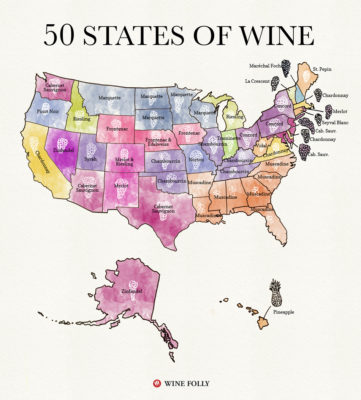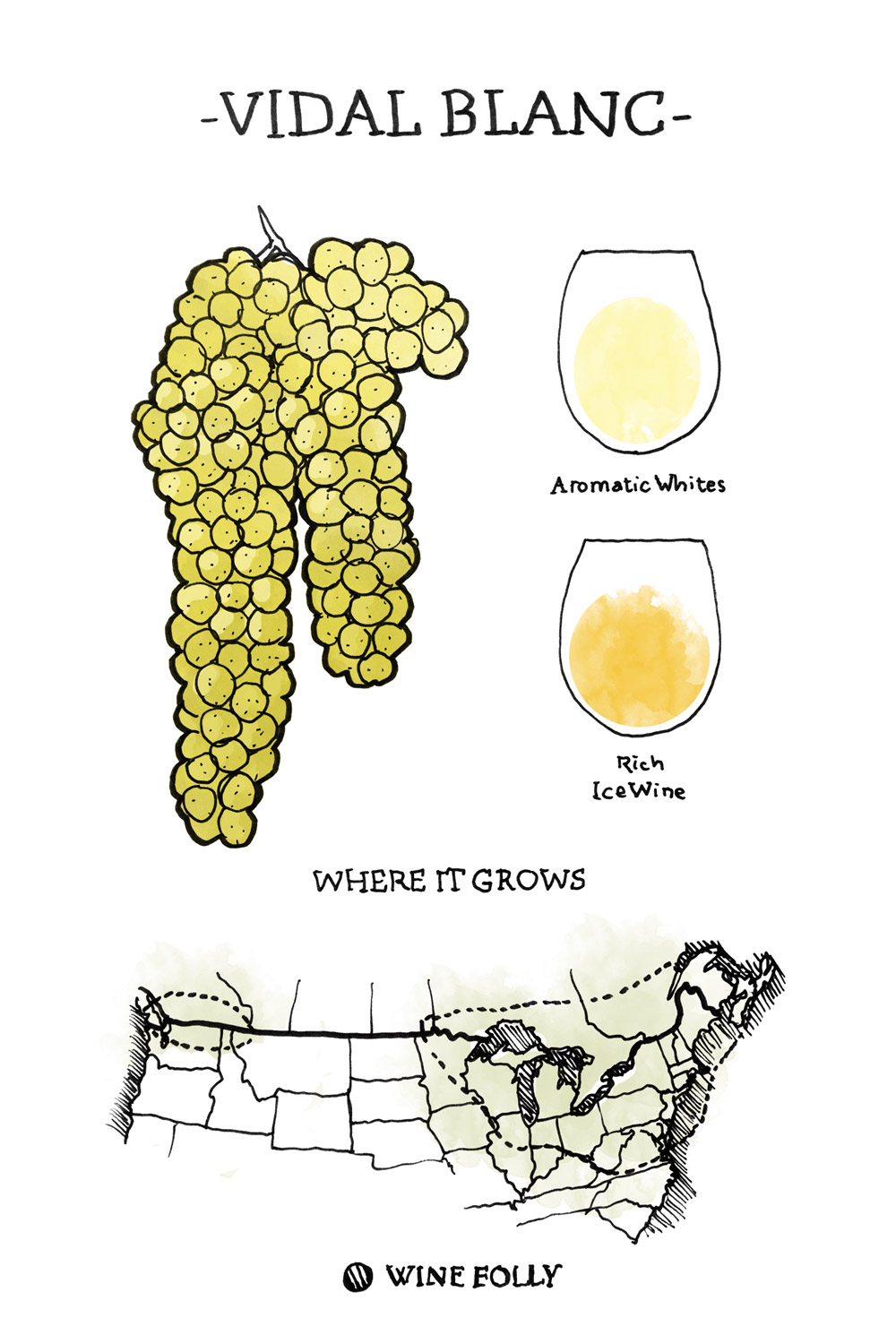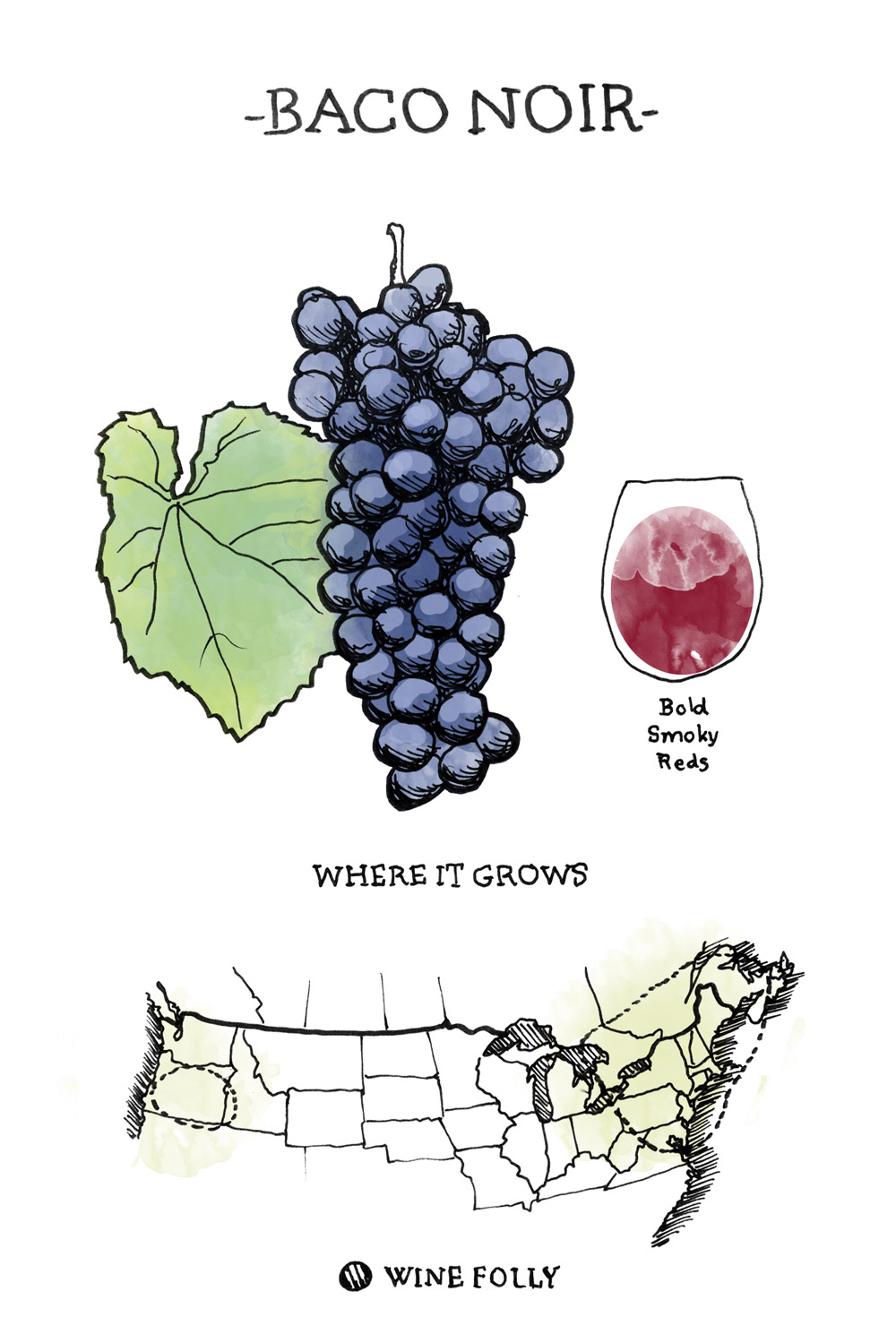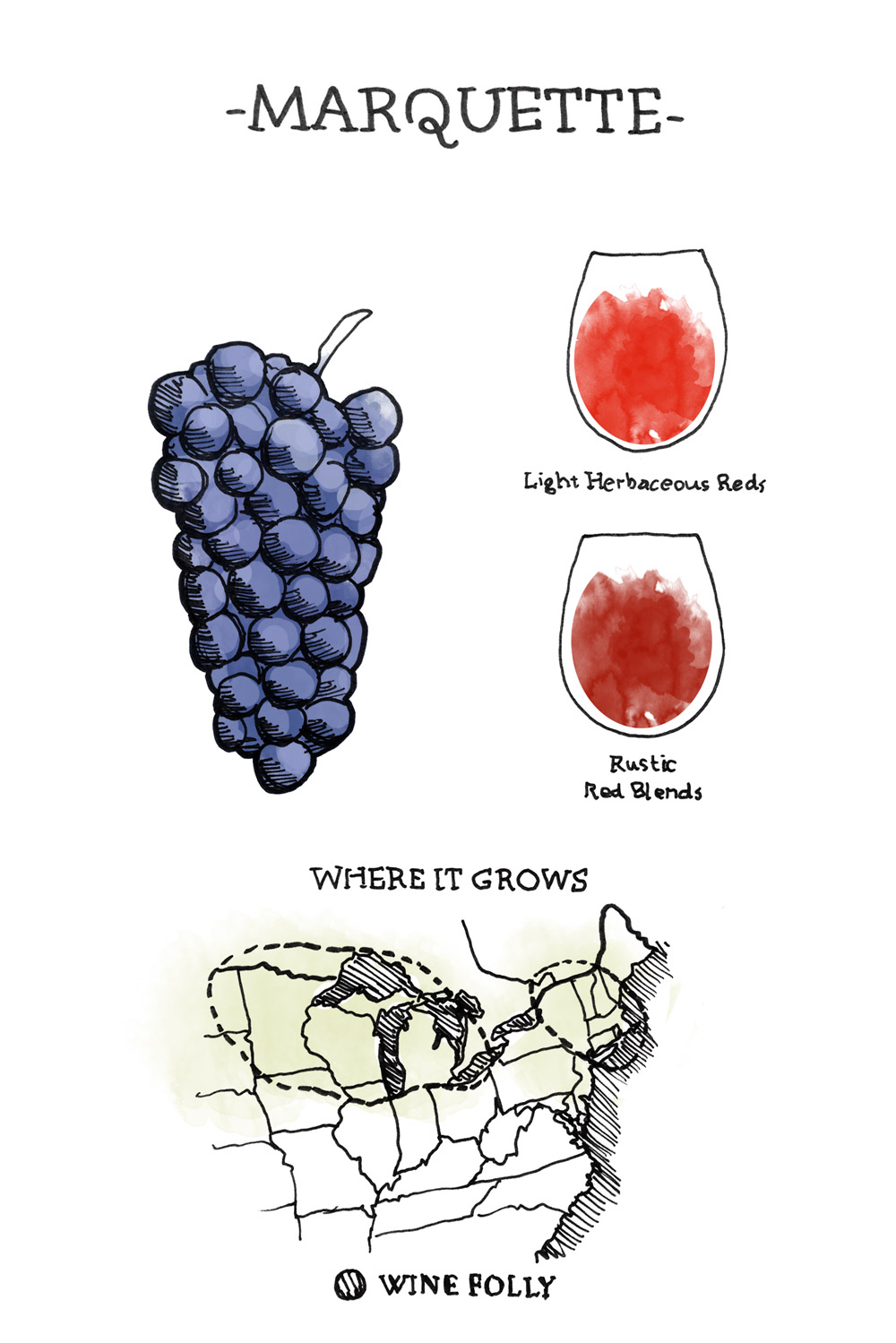The ideology of “drinking local” is totally doable if you happen to live in California, but what if you live somewhere cooler? There are many places that were long considered a wine “dead zone” (The Midwest, Canada, Switzerland, etc) because winters were so cold that they would kill European wine varieties (temps drifting down to -18 ºF / -28 ºC). This actually happened in Michigan in 1994 when two freezes took out an entire vintage and killed all the European vines (save for Cabernet Franc and Riesling).
Enter hybrid varieties: the cool climate solution to wine growing. Many of the most popular hybrid wine varieties were bred in experimental vineyards at universities such as Cornell and University of Minnesota. The benefits of these hybrids is cold hardiness and disease resistance. They aren’t GMO’s like Monsanto corn, rather they are more like new apple varieties (Gala, Opal, Pink Lady) created by mating different species together. Wines made with hybrid varieties have improved by leaps and bounds, but they struggle from a poor past reputation and lack of presence in the wine world.
How Hybrid Wines Came to Be
Hybrid varieties were originally created as a solution to phylloxera in France. Most were used for bulk wine production giving the new grapes a poor reputation from the get-go.
It’s time for a new perspective. Wines made from Chambourcin, Vidal Blanc, Baco Noir and Marquette are making waves in the Midwestern States and Canada. Here’s what to know about these fascinating French-hybrid varieties.
4 French Hybrid Wines to Know
Chambourcin
Boisterous peppery red and rosé wines.
Tasting Notes: black cherry, black pepper, crushed gravel, wet loam and chocolate with high acidity and low tannin.
Where to find: Ontario (Canada), Missouri, Pennsylvania, Michigan, North Carolina, Illinois, Indiana, Ohio, Kentucky, New York and New Jersey
About: Developed in France in the 1950’s by Joannes Seyve and one of the most planted hybrids in France (found predominantly in the Loire and the Nantes region). This grape has an affinity to Cabernet Franc with boisterous fruit and pepper flavors, soft tannins and ample acidity. Chambourcin is often blended with other varieties (including Baco Noir and Marechal Foch) to increase the aromatic intensity and tannin structure. Wines are produced in three dominant styles:
- An oaked style (with French or American oak) that offers deep stewed fruit, spice, tobacco, and chocolate flavors with occasional notes of bell pepper and flinty rocks.
- A “nouveau” style inspired by Beaujolais Nouveau which are rustic with notes of tart red fruits, peppery acidity and a punchy finish.
- A steely, tart, dry rosé.
We were surprised to see that even Jancis Robinson has nice things to say about Chambourcin including “Wines… do not have the intrusive flavours sometimes associated with hybrids.” (Wine Grapes). For someone who’s been traditionally anti-hybrid, this is great!
Vidal Blanc
Fine ice wine.
Tasting Notes: candied currant, pineapple, honeydew melon, lychee, mango and honeysuckle with tingly high acidity.
Where to find: Canada, Virginia, Michigan, Missouri, New York, Maryland, Ohio
About: Created by Jean-Louis Vidal in France during the 1930’s, Vidal Blanc or just Vidal is best known for its incredibly rich and tingly ice wines. Canada’s Niagara Peninsula and Ontario are the most famous for Vidal production where ice winemaking happens every vintage. In fact, the world’s largest producer of ice wine is Inniskillin of which Vidal is a key variety at their estate vineyard in Niagara.
Baco Noir
Black cherry bomb.
Tasting Notes: cherries, raspberry, coffee, leather, licorice, cedar and smoke with high acidity and moderate intensity tannins.
Where to find: Canada, New York, Oregon, Nova Scotia
About: Baco Noir is a cross between European Vitis vinifera and American Vitis riparia developed in 1902 when phylloxera had decimated French vineyards. Baco Noir is phylloxera resistant, so it was planted in many places throughout France, but today is all but gone since it’s not an authorized variety. The grape can be found growing in popularity in Canada (from British Columbia to Quebec) where wines are often best opened from 4–6 years post-vintage.
Marquette
Rustic light-bodied red.
Tasting Notes: black currant, sour cherries, wet gravel, green peppercorn and black olive flavors with high acidity, and grapefruit pith-like astringency
Where to find: Minnesota, Michigan, Wisconsin, South Dakota, Vermont, etc
About: One of the hardiest cool-climate hybrids developed recently in 2006 at the University of Minnesota. Wines are very high in acidity but low in tannin. Wines are light-bodied with a tart, rustic character. Several producers oak-age Marquette to soften the wine’s acidity and give them more chocolaty flavors.
Last Word
Scientists at Cornell University, University of Minnesota and University of Michigan have been continually improving hybrid wine varieties. Today, many winemakers have stepped up, taking their hybrid varieties as seriously as European varieties. Perhaps some day soon, hybrid wines will be an integral part of American wine culture.

50 States of Wine
All 50 of the United States are growing wine grapes (even Alaska!). Find out the major grapes of each state.
The United States of Wine
Do you have a hybrid wine tale? Tell us about it! Leave a comment including the variety (or blend), how it tasted, and what you thought.



